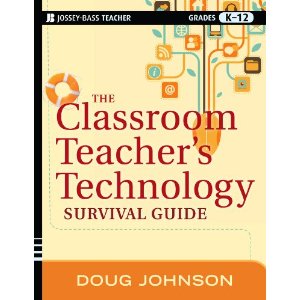Whip Me, Beat Me, Make Me Use a Computer to Improve My Reading
 Tuesday, August 23, 2005 at 06:40PM
Tuesday, August 23, 2005 at 06:40PM With federal reading improvement dollars flowing into some of our Title One schools, there’s been an increase in the use of computerized reading programs. Our district uses Read Naturally. Its website claims: Read Naturally continues to provide teachers with all of the tools they need to address the fluency needs of their students.
I sincerely hope not.
Granted, I am not a struggling reader or an ESL student. But I practiced with this computer-based reading tutorial last week. It had been a while since I had used such a creature and was expecting some dramatic improvements in machine-based reading instruction from what I had experienced four or five years ago. I was set up as a 5th grade, high-achieving student, and worked on a lesson about Daniel Boone – one of my favorite historical characters. The program made me review vocabulary, read the very dull story about three times, have the very dull story read to me three times (couldn’t skip), and gave me a low level quiz on my comprehension. I did a small amount of writing to summarize the content. I spent about an hour on a single passage of about 500 words. Boring, boring, boring.
You want to kill a kid’s love of reading quicker than Dan’l could kill a b’ar, this is the product to use. I ruefully reflected on how much better giving a kid James Daugherty’s fine book Daniel Boone would be and sit with him and read along.
I suppose in their place - in schools with sub par teachers, and with a very select number of students - programs like Read Naturally may do some good. But for the vast majority of kids, using these expensive basal-readers-on-a-disk run the real chance of creating negative associations with both reading and computer use.
All media specialists should be promoting another means of building student reading skills – Personal Voluntary Reading. It’s effective and builds not just reading skills, but the desire to read. Please purchase, read and share Stephen Krashen’s book The Power of Reading with your teachers and reading specialists. My review.
To me it seems the logical sequence in working with kids and reading is to instill the desire to read long before trying to teach reading skills. Good stories, good storytellers, and lots of exposure to books will do this; computers don’t.
Your experiences with online reading systems?









